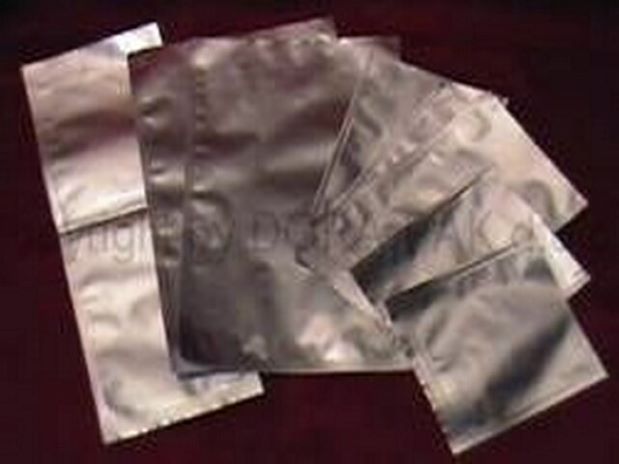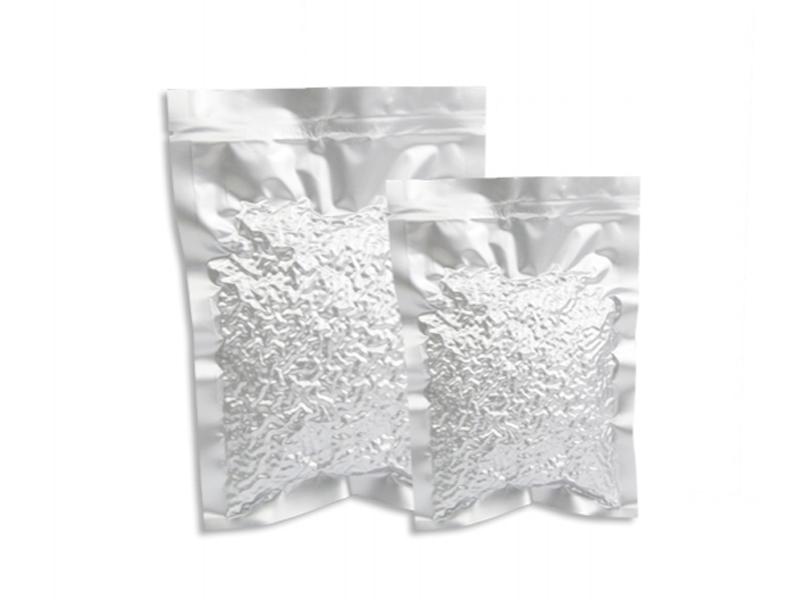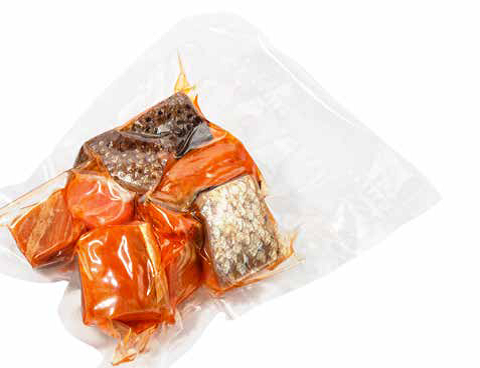Freezing Food and Pakaging Material
Air is by far the most widely used method of freezing food as it is economical, hygienic, and relatively noncorrosive to equipment. Systems range from the most basic in which a fan draws air through a refrigerated coil and blows the cooled air around an insulated room, to purpose-built conveyorized blast freezing tunnels or spirals. Relatively low rates of heat transfer are attained from product surfaces in air cooled systems. The big advantage of air systems are their versatility, especially when there is a requirement to freeze a variety of products particularly of irregular shapes.
The provision of low temperature for freezing is obtained from closed-circuit compression–expansion refrigeration systems, or by a cryogenic process of exposing the product to a cold atmosphere of liquid nitrogen or liquid carbon dioxide.
Various refrigerants have been used for the compression–expansion system, which forms the major source of food freezing, probably 90% of all installations.
Ammonia and sulfur dioxide are excellent media for the refrigeration process, but they carry the hazard of being inflammable and the risk of explosion. This led to the development during the 1930s of the first chlorofluorocarbon (CFC) refrigerants, R11 and R12. These refrigerants replaced SO2 in domestic refrigeration and NH3 for small freezing systems. The later development of R22 (a hydrochlorofluorocarbon, or HCFC) and R502 (an azeotrope), displaced NH3 from all but the largest of industrial freezing systems. Table 1 shows the characteristics of common refrigerants.
Many foods are processed before being packaged, distributed and consumed. The major processing operations include drying, freezing, baking and extrusion, but novel processing methods, such as high-pressure treatment, are under development and can be used either alone or in combination with more conventional processing operations. By providing spatial maps of moisture, temperature and quality factors during processing, in either the off-line or the on-line mode, MRI has the potential of revolutionizing the food processing industry. The scope for this type of study is very wide and will be illustrated by a few key operations, beginning with drying.
Frozen Food Packaging Films and Bags
Freezing and refrigeration significantly slows the growth and reproduction of microorganisms in food storage. However, these two methods often lead to food product weight loss and oxidation, which is why choosing the right materials for frozen food packaging will significantly impact the protection of your frozen food products.
We offer embossed vacuum sealer bags and films in a variety of sizes, made of high strength materials with a high barrier performance to ensure the long-term quality of your food. We also properly increase the proportion of plasticizers to improve the bag mechanical strength, ensuring we offer products that meet all requirements for protection of frozen food to maintain flavor and quality.




